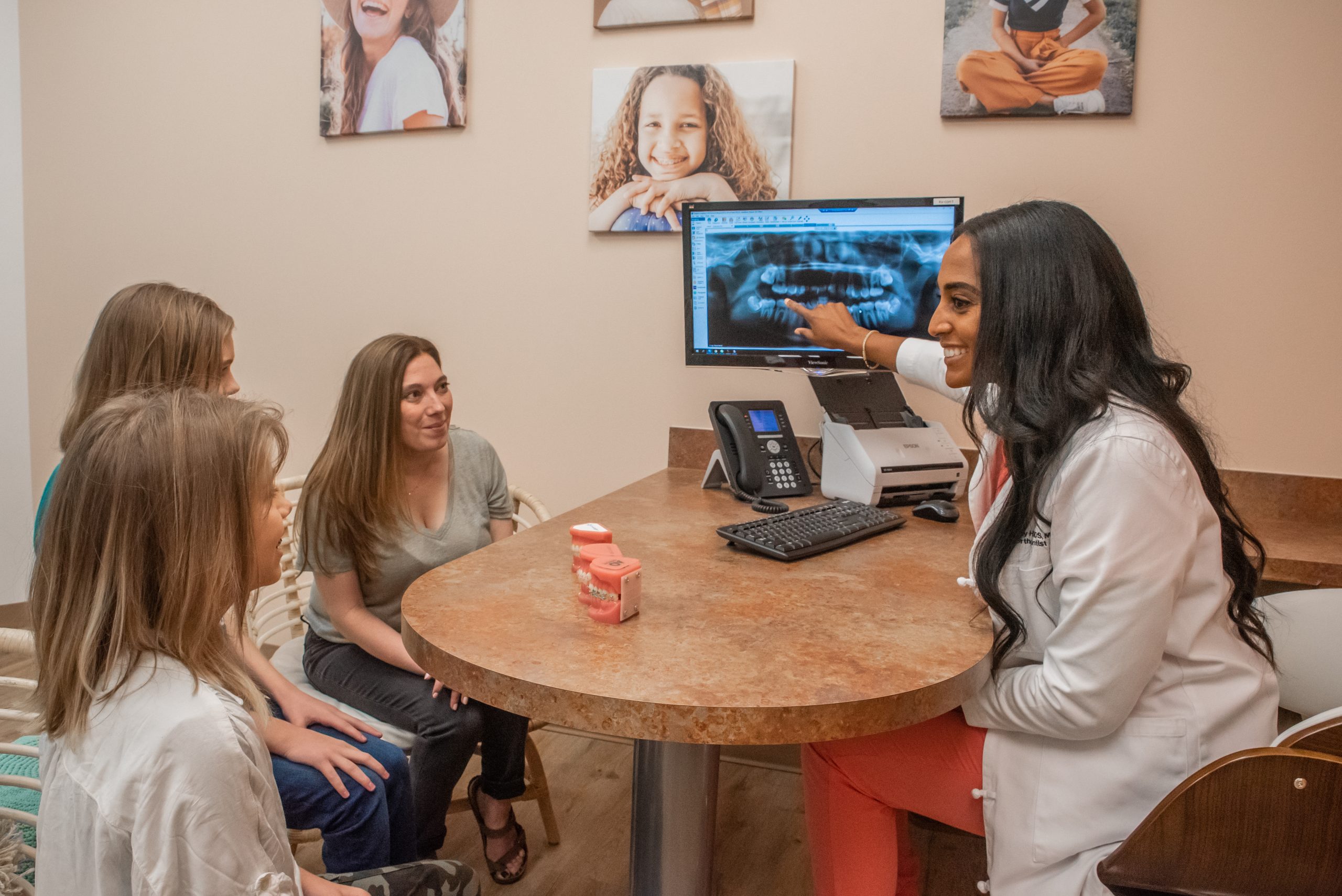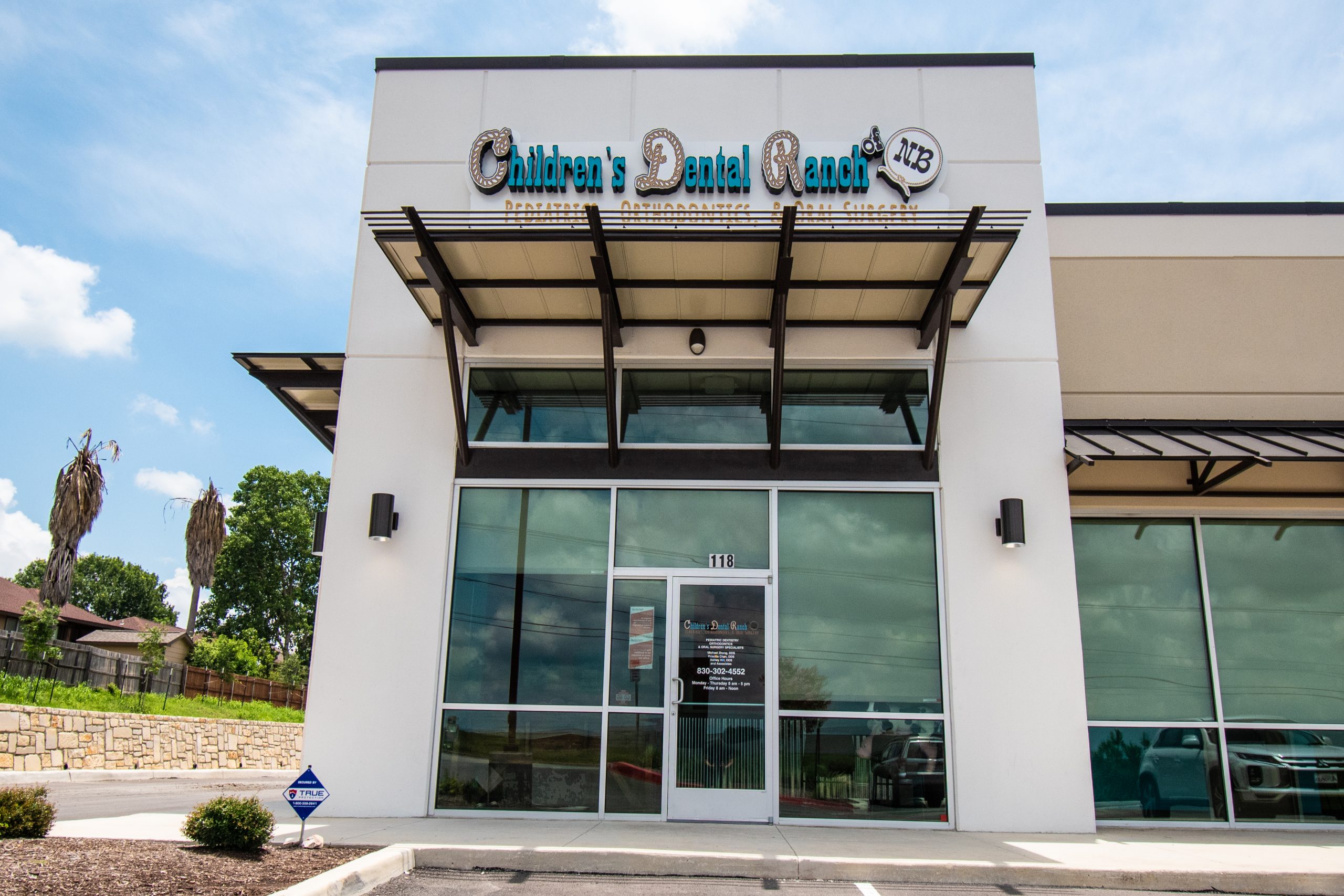Pediatric Dental Treatment in New Braunfels, TX
At Children’s Dental Ranch of New Braunfels, we specialize in pediatric dental care, so our team understands the unique dental needs of children, adolescents, and teenagers. Our dedicated team provides a variety of dental services with a gentle and compassionate approach, ensuring our environment is both comforting and enjoyable for our young patients and their families.
Pediatric Dental Services We Offer
- Pediatric Dental Exams & Cleanings: Regular dental check-ups and cleanings are essential for maintaining a healthy and happy smile for your child. Our thorough yet gentle cleanings effectively remove plaque and tartar, and our comprehensive exams help detect early signs of potential issues to protect your child’s oral health.
- Preventive Dental Care: Our focus on preventive care and early detection includes services such as fluoride treatments, dental sealants, and educating families on proper oral hygiene practices. Our goal is to build a lasting foundation of good dental habits that will benefit your child throughout their life.
- Children’s Fillings, Crowns, and Restorative Care: If your child requires fillings, crowns, or other restorative dental treatments, our team is here to provide the necessary care to restore the function and appearance of your child’s smile.
- Dentistry for Patients with Special Needs: We are committed to offering customized and sensitive care for patients with special needs, ensuring that every child has access to our dental services.
- Nitrous Oxide and Sedation Dentistry for Children: For children who experience dental anxiety or those undergoing longer or more complex procedures, we offer nitrous oxide and other safe sedation options to ensure a stress-free experience.
- Pediatric Dental Emergencies: In the event of a dental emergency, it can be a stressful time for both children and parents. Our team is prepared to provide prompt and effective treatment to address dental injuries and emergencies, ensuring peace of mind and immediate care.

We Love Hearing From Our Patients
Testimonials
The Proof is in Our Patients
My kids love CDR! The staff at the front desk always welcomes us with a friendly smile, dentists are great at explaining what will be happening at appointment. Any times I have questions with billing staff is quick to answer and explain, especially costs with and without insurance. The bonus for my kids are the goodies they get to pick at the end of their appointment. I highly recommend CDR.
My son is 3 and has been coming to this practice since he got teeth. This was his first time for a big boy cleaning on the table. Previously he would lay in my lap for visits. They are kind and do an awesome job. No shame for thumb sucking, but offer ideas to help. Love them!!!
We had an incredible experience here! My daughter is terrified of the dentist but actually let them clean her teeth! From the office staff to the doctors, everyone is so kind and compassionate. Our doctor was so honest and helpful. I didn’t feel like we were being offered different treatments just to rack up the bill. Our doctor came with an honest opinion that other dentists did not offer. I would highly recommend this dental office!
The staff was fantastic and the facility was clean. This was our first visit to this dental office and it was great. My kids felt at ease and our appointment was quick. We’re happy to have found a new dental office for our boys.
I love our new dentist and the whole dental ranch staff! My son was incredibly nervous about x-rays to the point of tears and panic and they were all so patient and kind to him. I highly recommend this pediatric dentistry to everyone.
Schedule Your Appointment Today!
Our Location

Children's Dental Ranch of New Braunfels
To schedule a pediatric dental appointment or orthodontic consultation, book a time online with the buttons below or call our office to speak with one of our friendly team members!
Phone
Address
Working Hours
- Monday-Friday: 8 AM - 5 PMTuesdays: Orthodontic Appointments Only


